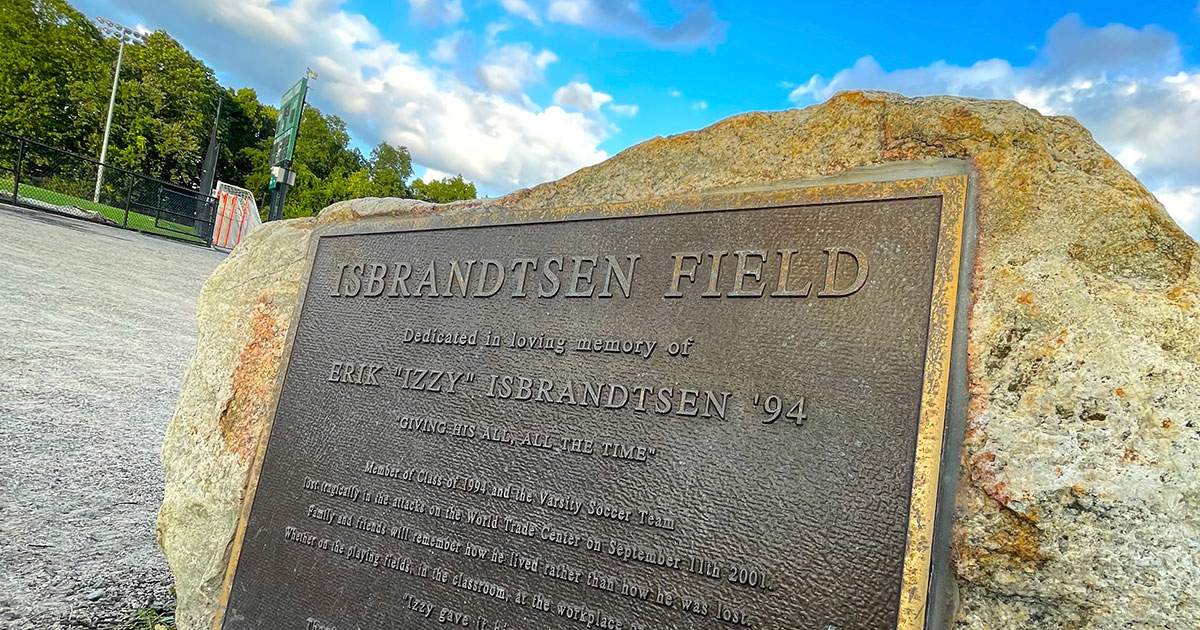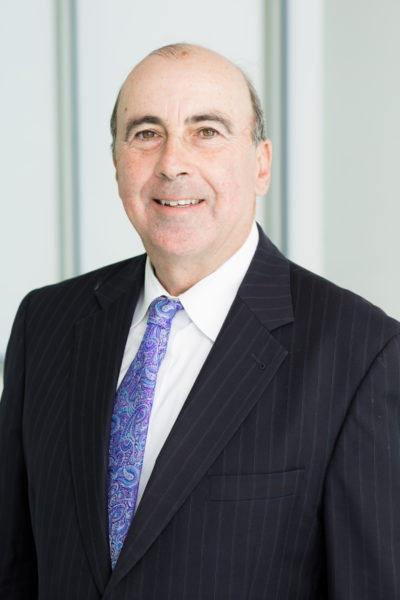Remembering 9/11, 20 Years Later

Twenty years ago, on September 11, 2001, nearly 3,000 people lost their lives in terrorist attacks on the United States, including three Babson College alumni.
Gordon M. Aamoth Jr. ’92, an investment banker, and Erik H. Isbrandtsen ’94, an industrial sales trader at Cantor Fitzgerald’s equity desk, perished in the World Trade Center’s towers. And, Neilie Anne Heffernan Casey MBA’02, a planning manager for TJX Companies, died in the crash of American Flight 11 in New York. She was pursuing an MBA through the evening program at Babson at the time.
Today, a new generation is growing up in a world defined by an event they did not experience.
“We have a tendency to focus on the milestone years, such as 20,” says Kevin Sullivan, vice president of strategic corporate relations and engagement at Babson. “But, each year, we should make sure that every generation of Americans knows what happened that day.”
A City Emptied Out
At the time of the attacks, Sullivan was secretary of transportation and construction for Massachusetts and was tasked with leading the state’s crisis management operations. Like many, he remembers the day’s events so vividly he can give a minute-by-minute account.

“Back on that Tuesday, I was coming to my office at 10 Park Plaza. I remember driving in, I was listening to the radio and heard that a plane had hit the World Trade Center. I was minutes away from my office, and we turned on the TV once I got there,” Sullivan says. The initial news reports were confused and conflicting, he says. “At first, we thought it was an accident.”
After the second attack, he says, “everyone was on alert.” Federal and state officials in Boston had gathered in a command center downtown and, like officials throughout the country, they now assumed the plane crash into the World Trade Center had been carried out by terrorists and worried about further attacks, particularly on infrastructure. “We didn’t know if the other shoe was going to drop,” he says.
Sullivan says the team shut down major bridges in the city such as the Tobin Bridge, then made the decision to evacuate Boston offices. He decided to keep the subway running, but only outbound, so people could get out. Leaving the city, “people were scared, but they were orderly,” he said. “For the most part, Boston was desolate within two hours.”
He credits Jane Swift, the Massachusetts governor at the time, for “making a decision early and sticking with it. The plan worked,” he adds, “But, it was eerie. It was a bright, sunny day and you have this beautiful city, but it’s empty.”
“The kids who watched it all happen probably had no idea that they would be put in uniform, that (the events of that day) would alter their lives.”
Remembering ‘Izzy’
The Babson community commemorates the alumni who lost their lives that day in various ways.
Isbrandtsen, or “Izzy” as he was known, was a star soccer player at Babson. Each year, the Beavers pay tribute to him at Isbrandtsen Field, named in his honor.
“Izzy was a high-energy, dynamic, confident player for Babson Soccer,” says Jon Anderson ’75, P’04 P’08 P’13 P’13, the longtime Babson men’s soccer head coach. “His tension-breaking humor and the game-changing plays he made on the field always picked the team up.”
A soccer teammate and friend, David McEachern ’94, remembered how Isbrandtsen, a midfielder, had come back from a bad junior-year injury in better condition than anyone else on the team the next fall. “If anybody could do 80 years in 30 good ones, he could,” McEachern said.
Memorials Big and Small
Isbrandtsen’s memorial sits on Babson’s campus, while other memorials—at least a dozen of them scattered throughout the country—remember and honor Aamoth and Casey.
One of the largest and most visited is the 9/11 Memorial & Museum at the site of the former World Trade Center towers in New York City. It contains items “recovered” from the charred remains of the Twin Towers at Ground Zero, such as a battered ID card belonging to Aamoth.
A profile of Aamoth in The New York Times notes that the Wall Street banker was “at the top of his game. His golf was improving. He had girlfriends. And on Monday, Sept. 10, in his hometown of Minneapolis, he completed his biggest merger deal as an investment banker at Sandler O’Neill & Partners. The deal was to be officially announced the next day at the firm’s World Trade Center office.”
“We have a tendency to focus on the milestone years, such as 20. But, each year, we should make sure that every generation of Americans knows what happened that day.”
Kevin Sullivan, vice president of strategic corporate relations and engagement at Babson
A quieter memorial sits on a grassy knoll overlooking the Atlantic Ocean near Nobska Lighthouse in Woods Hole, Massachusetts. In August 2002, a memorial plaque dedicated to Casey was erected there. The site, maintained by her family and the U.S. Coast Guard, draws people from all over the world. They include Nancy August, a local Massachusetts writer who was so moved by the memorial that she got in touch with Casey’s family and wrote about her in a series of remembrances for a local paper.
“I didn’t live through the Holocaust. We all don’t live through monumental times of history,” August says, “but it’s so important to understand what the people who did live them go through.”
Anderson agrees. At Babson, a community of athletes remembers Isbrandtsen “by bringing the team, his teammates, friends, and family together every year on the anniversary to tell the Izzy stories that keep the memories alive. For each new class coming into our program, they learn how he died and, most importantly, how he lived.”
Posted in Community



